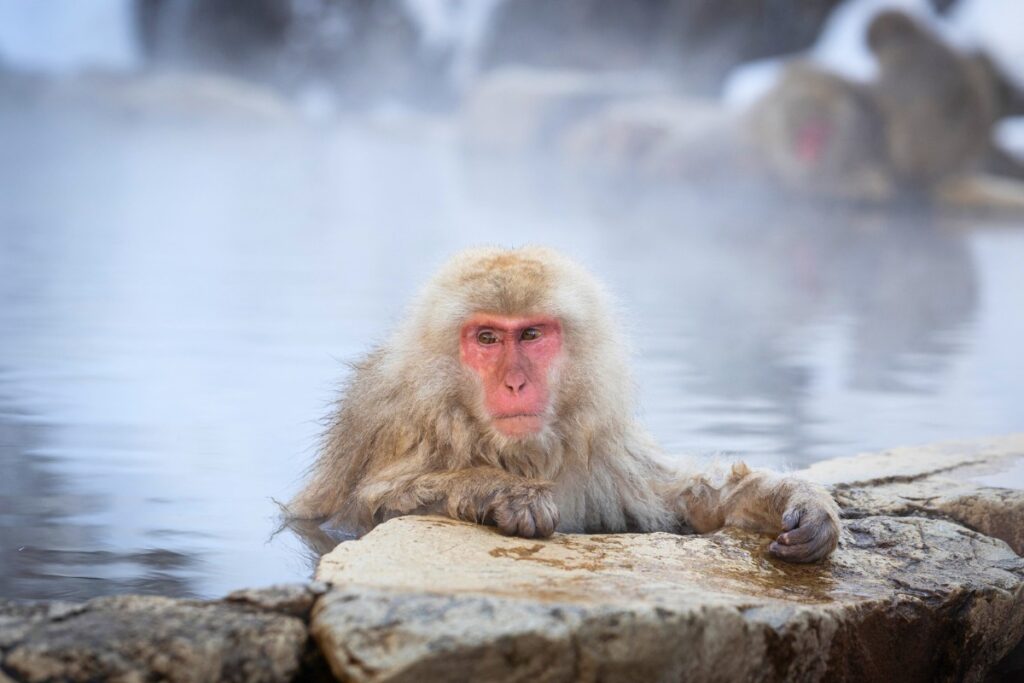
Hoping to see Japan’s famous snow monkeys? But not sure how to get there? Don’t worry! This complete guide outlines exactly how to visit the Snow Monkey Park from Tokyo.
Tucked away in the mountains of Nagano, Japan’s Snow Monkey Park is a unique and captivating destination – one that combines nature, wildlife, and a touch of winter magic.
Officially known as Jigokudani Yaen-Koen, this scenic park is home to a troop of wild Japanese macaque monkeys that are famous for their love of onsens (aka hot springs).
Throughout the year, but especially during the winter months, you can find these delightful creatures soaking and relaxing in the mountain’s natural thermal ponds.
It’s such an unforgettable experience – and one that I highly recommend!
In fact, I recently visited the Snow Monkey Park on a day trip from Tokyo, and I can’t get over how enjoyable it was!
The monkeys were incredibly cute! And watching them freely run around, play, and lounge in their cozy onsens was such a unique experience!
That said, Jigokudani Park isn’t the easiest destination to reach. It lies a bit off the beaten path, so getting here takes some time and dedication. But, it’s definitely doable – and well worth it!
In this guide, I’ll walk you through step-by-step how to travel from Tokyo to the Snow Monkey Park.
Whether you’re looking for the fastest route, the most budget-friendly option, or prefer a more guided experience, I’ve got all the information you need and more.
So, without further ado, let’s break it all down and plan out your visit to Japan’s Snow Monkey Park!
*Please note: This post contains affiliate links to trusted partners. If you make a purchase using these links, I will earn a commission at no extra cost to you. Thank you for your support!
Planning a last minute trip to the Snow Monkey Park?
Here are a few quick recommendations for you!
I suggest booking these services and activities in advance!
🚅 Getting There:
– Japan Rail Pass (Great option if you plan to travel all over Japan)
– Individual Shin Tickets (Will likely be cheaper if you don’t plan to visit many cities)
👣 Activities & Tours:
– 2 Day Snow Monkey Pass (Includes admissions & use of local transportation)
– Guided Tours to the Snow Monkey Park (Depart from Tokyo or Nagano)
What Is Jigokudani Monkey Park?
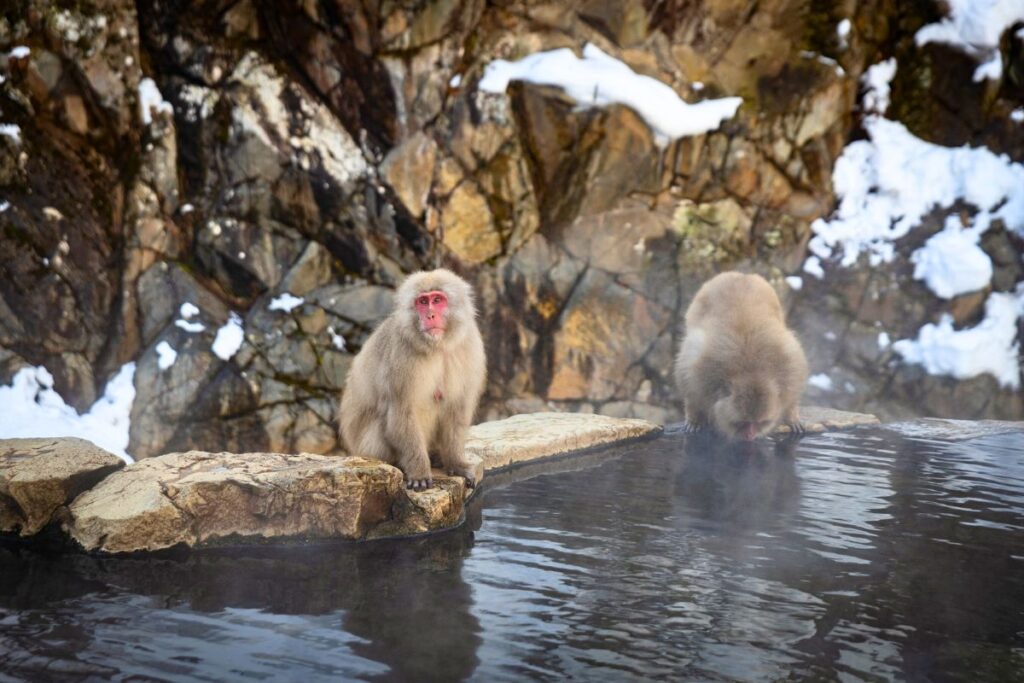
Opened in 1964, Jigokudani Yaen-Koen is a unique free-roaming park where wild Japanese macaque monkeys gather – often to soak in hot springs.
They travel down from the nearby mountains on almost a daily basis, drawn in by the warmth of the onsens and the promise of free food.
It’s not exactly clear why the park was created in the first place. Although, two common theories persist – and my guess is they both likely played a role to some extent.
The first theory suggests that the park was established to ease conflict between the monkeys and local farmers.
As ski resorts and other developments expanded into the mountains, the monkeys were pushed to lower altitudes, where they began raiding farms and destroying crops.
To reduce tensions, the Snow Monkey Park was created as a designated safe space for them to go.
This story is very similar to the one surrounding the Monkey Park in Beppu. So, it’s entirely possible that something similar happened in Nagano.
However, other sources suggest that the park was actually developed for research and observation purposes.
Japanese macaques are known for their complex social structures and unique behaviors. And, the monkeys at Jigokudani Park are especially fascinating due to their love of hot springs.
It’s said that researchers wanted an opportunity to study the monkeys in their natural habitat, and so the park was created to support those efforts.
Regardless of its origins, the Snow Monkey Park has become a beloved destination for locals and tourists alike.
Fun Fact: The monkeys of Jigokudani are the only monkeys in the world known to bathe in hot springs – a behavior they likely learned by watching humans!
Where Is Japan’s Snow Monkey Park Located?
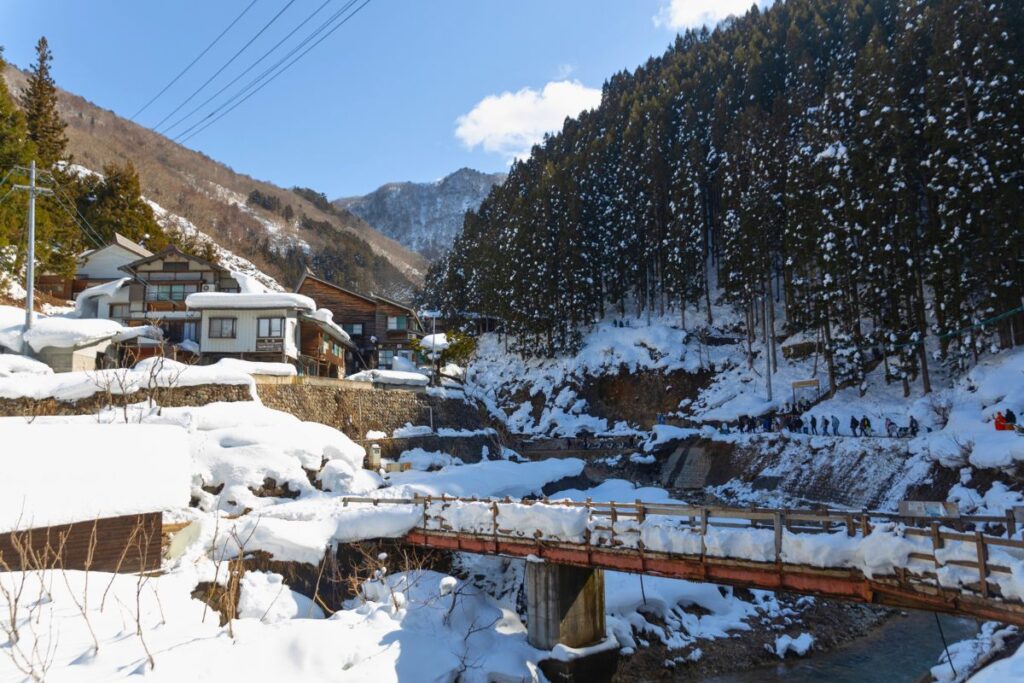
The Jigokudani Snow Monkey Park is located in Nagano Prefecture, in the northern town of Yamanouchi.
Nestled in the Japanese Alps, it lies within the Joshinetsu Kogen National Park – a vast and scenic wilderness known for its rugged mountains, lush forests, and abundant wildlife.
Despite the park’s remote setting, it’s still quite accessible from Nagano City and by extension Tokyo.
The park is situated about 38 kilometers from Nagano Station and 270 kilometers from Tokyo Station.
Map of the Snow Monkey Park
To help you get a sense of the area, I’ve included below a map that shows the distance from Tokyo to the Snow Monkey Park.

How to Get to the Snow Monkey Park from Tokyo
There are four main ways to travel from Tokyo to the Snow Monkey Park – by train, bus, guided tour, and car. For those short on time, I’ve put together a quick comparison of each:
- 🚄 Bullet Train: The fastest, but most expensive option. It takes 2.5-3 hours to reach the park and costs about 20,000 yen round trip.
- 🚌 Highway Bus: The slowest, but most affordable option. It takes 5-5.5 hours to get to the park and costs approximately 5,600 yen round trip.
- 🗺️ Guided Tour: While prices and itineraries vary, the most popular tour lasts 12 hours and costs 17,000 yen per person.
- 🚗 Rental Car: Travel time is about 3.5 hours from Tokyo to the park. Rental prices vary but typically range from 5,000-10,000 yen per day.
Below, you’ll also find a detailed breakdown of each option, so you can decide what works best for you and your itinerary!
Travel by Train
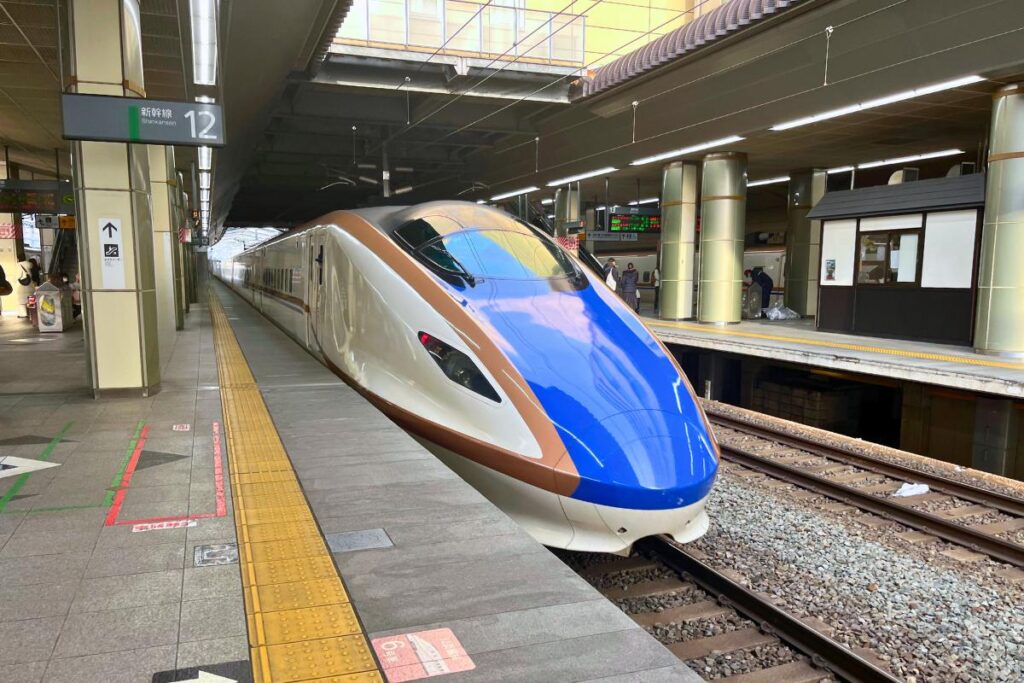
If you’d prefer to minimize your travel time, your best option is to take the Hokuriku Shinkansen (aka bullet train) from Tokyo to Nagano Station.
This train makes two stops within Tokyo – at Tokyo Station and Ueno Station – so you can board at whichever is most convenient for you.
Travel times to Nagano vary depending upon the specific train, but average about 1.5 to 2 hours.
Once you arrive at Nagano Station, you have two options to consider for the next and final leg of your journey:
- Nagaden Snow Monkey Express Bus – The fastest and most convenient option. It takes about 45 minutes in total, providing direct transportation to the park.
- Nagano Dentetsu Train – A slower but scenic option. This local express train travels 45 minutes to Yudanaka Station. Here, you’ll need to transfer to the Kobayashi Bus Line for a 10-minute ride to the park.
I personally recommend taking the Snow Monkey Express Bus, as it’s the most direct and time-efficient option!
Info on Transit Tickets
Here’s a quick overview of where and how to purchase transit tickets for your trip!
Bullet Train:
🎟️ Tickets for the Hokuriku Shinkansen can be purchased online or at the train station.
✅ To secure your preferred train and seats, it’s best to book in advance.
💳 If you have a JR Pass, there’s no need to buy a separate ticket – this route is already covered.
Snow Monkey Express Bus:
🎟️ Tickets can be purchased at Nagano Station (cash only!).
🏷️ Available at a ticket machine inside the station or, during busy times, from a vendor near the bus stop.
📍 The bus stop is located near the east exit of Nagano Station, with plenty of signs to guide you.
Nagano Dentetsu Train & Kobayashi Bus:
🎟️ Nagano Dentetsu Train tickets can be purchased at Nagano Station.
🏷️ Kobayashi Bus tickets are available at Yudanaka Station.
❌ Most IC cards (Suica, Pasmo, etc.) are not accepted, so it’s best to buy tickets as you go.
Pro Tip: If you plan to explore more of Nagano, consider purchasing the Snow Monkey Pass. This 2-day pass includes admission to the Snow Monkey Park, plus unlimited rides on select trains and buses in the area.
Travel by Bus
If budget is your main concern, then a highway bus might be your best option. Just, please keep in mind that it’s also the slowest.
In total, the journey from Tokyo to Nagano Station takes about 4-4.5 hours, then it’s another 45-minute ride to the Snow Monkey Park.
As such, I only recommend this option, if you plan to spend the night in Nagano. It would be too much to try and visit the park as a day trip via bus.
That said, most buses to Nagano depart from the Shinjuku Expressway Bus Terminal, which is located right next to Shinjuku Station.
You can purchase tickets either upon arrival or ahead of time online. While I’ve never personally purchased bus tickets online, I have heard good things about Japan Bus Online.
Once you arrive in Nagano (most buses will take you to Nagano Station), you’ll need to transfer over to a local line. There are two options for you to consider here:
- Nagaden Snow Monkey Express Bus – Provides direct transportation from Nagano Station to the Snow Monkey Park with travel times of about 45 minutes. This makes it the fastest and most convenient option.
- Nagano Dentetsu Train – A slower but more scenic option, this local express train travels 45 minutes from Nagano Station to Yudanaka Station. Once here, you’ll need to transfer to the Kobayashi Bus Line for a 10-minute ride to the park.
I personally recommend taking the Snow Monkey Express Bus, as it’s the most efficient and convenient option!
As shared above, you can purchase tickets for the Snow Monkey Express Bus and Nagano Dentetsu Train upon arrival at the train station.
Travel by Tour
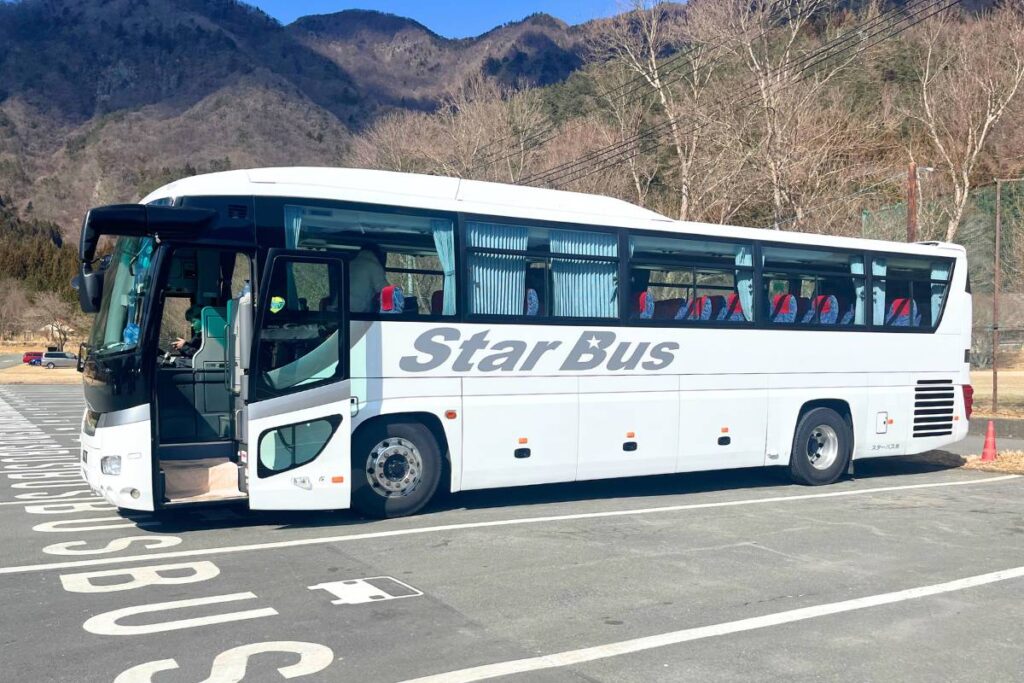
For those who prefer a more guided experience, there are Snow Monkey tours available that depart from Tokyo and from Nagano (if you’re able to get yourself into the city).
In addition to transportation, they typically include admissions into the park, lunch, and sometimes an additional activity or destination – like a visit to the Kamakura snow huts.
That said, some tours are only offered during the winter months, so that’s something you’ll want to take into consideration.
If you do decide to join a guided tour, I highly recommend booking your spot in advance, as they are known to sell out quickly!
Travel by Car
And last, but certainly not least, it’s possible to drive to Nagano, if you’re comfortable renting a car and navigating Japan’s roads.
The drive from Tokyo to the park takes about 3.5 hours, so it’s definitely doable as a day trip.
However, I’d encourage you to hang around a bit longer and explore more of the area. You have the car, so you might as well make the most of it!
That being said, car rentals are readily available throughout Tokyo. So, you should have no problem securing a vehicle for your trip. Just be sure to, again, book it in advance!
Driving in Japan
Before you rent a car in Japan, make sure you look into the Japanese license requirements specific to your home country. Depending upon where you reside, you might need to obtain an International Driver’s Permit, a translated copy of your home country’s driver’s license, or, in some specific cases, a Japanese driver’s license.
For those traveling from the United States, Canada, Australia, Singapore, and most European countries, an International Driver’s permit is required. You can obtain this from an authorized automobile association in your home country.
Best Time to Visit Japan’s Snow Monkeys
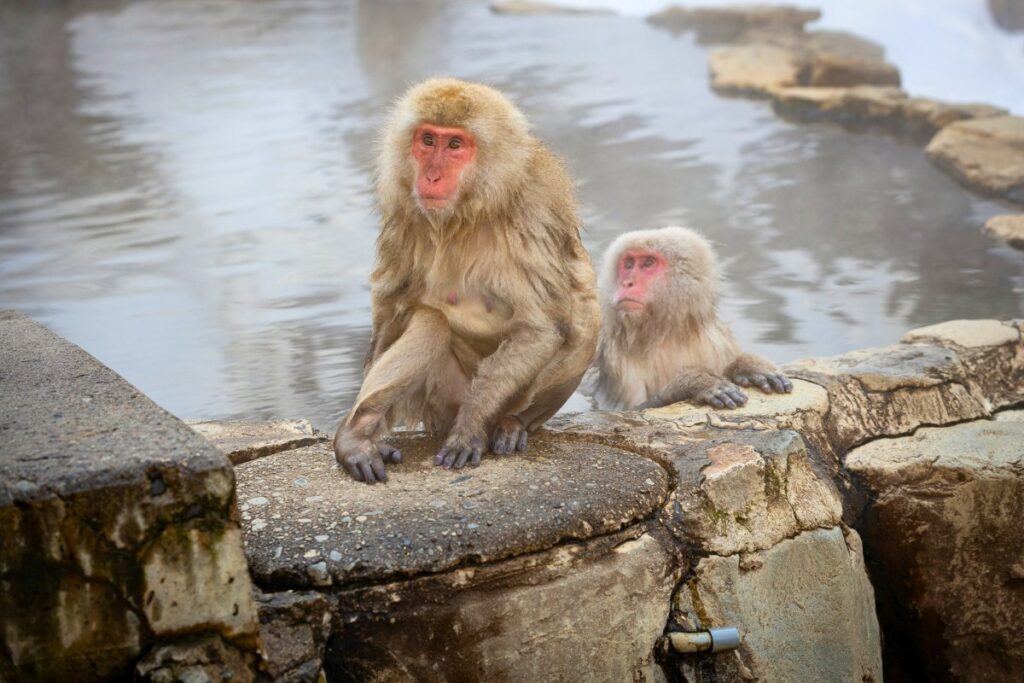
It goes without saying, but the best time to visit the Snow Monkey Park is during the winter!
This is when you’ll be able to watch along as the monkeys bathe in the steaming onsens surrounded by an incredible winter landscape – it’s truly a sight to behold!
Of course, winter is also the park’s busiest season, so you should expect larger crowds.
To avoid some of the rush, you can visit early in the morning or on a weekday – but you’re still likely to encounter other people.
If you wish to dodge the crowds altogether, consider visiting another time! The park is open year-round and monkeys can be spotted in every season.
Summer, in particular, is a great alternative – especially if you’re hoping to catch a glimpse of baby monkeys. Those born in the spring are usually running around all over the park come summertime.
Just be sure to keep an eye on the weather and look out for rain – July and August are the rainiest months of the year in Nagano.
Aside from this, you can visit the park in the spring or the fall. Just keep in mind that you may not see as many monkeys.
Spring is when the babies are born, so most mothers stay up in the mountains until their young are old enough to explore.
Meanwhile, fall is mating season and it’s also when the mountains are full of wild fruit and nuts – so the monkeys tend to be a bit more preoccupied around this time of the year.
Admissions to the Snow Monkey Park
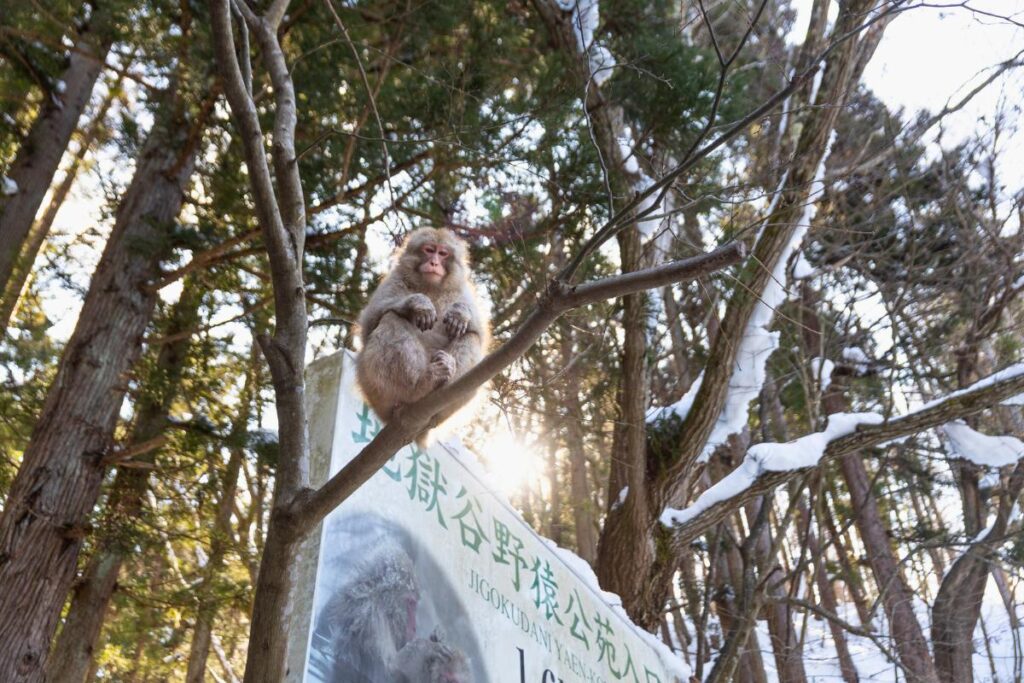
The Snow Monkey Park is open year-round, although operating hours do vary. They are as follows:
- November to March: 9:00 am – 4:00 pm
- April to October: 8:30 am – 5:00 pm
The cost of admission is currently set at 800 yen per adult and 400 yen per child.
Tickets must be purchased on-site, as there’s no option to buy them in advance – unless you opt for the Snow Monkey Pass.
You’ll find the ticket office right at the entrance to the park, alongside a small gift shop with restrooms.
Tips for Visiting the Japanese Snow Monkey Park
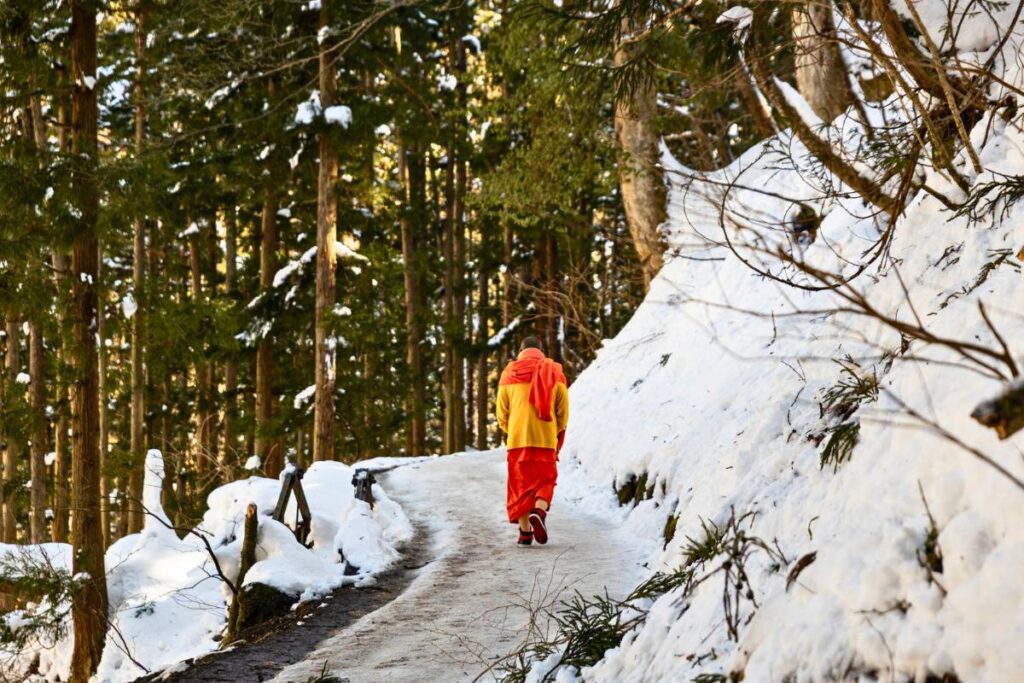
The trail that leads to the Snow Monkey Park.
Here are a few tips and tricks to keep in mind when planning your trip to the Snow Monkey Park in Nagano.
Arrive as Early as Possible
Although the Snow Monkey Park lies a bit off the beaten path, it’s still a popular destination – and can get quite crowded, especially during the winter.
To make the most of your visit, I highly recommend visiting the park as early as possible.
When we went, we arrived around 10:00 am and there was already a steady flow of visitors.
However, by the time we left around 12:30 pm, the crowds had more than doubled in size, and a long line had formed at the ticketing office.
So, trust me when I say – earlier is better! And this is coming from someone who is definitely not a morning person!!
Be Prepared to Hike
The park is tucked away deep within the mountains – so, you’ll actually need to hike a bit to get there.
The trail, which begins near the bus stop, is a very scenic and beautiful path, one that is relatively flat and easy to navigate. Although, there are a few steps here and there.
Most visitors should have no problem walking the trail. However, it does take about 30–40 minutes each way, so I recommend bringing along some water.
Also, be sure to keep an eye out – if you’re lucky, you may even spot a monkey or two along the way!
Dress for the Weather
Given that you’ll be hiking through the woods, it’s important to dress for the weather – especially when it comes to footwear.
In the winter months, the path can become quite slippery and/or muddy depending on the weather. So, I recommend wearing sturdy, waterproof shoes.
There’s also a small rental shop at the start of the trail where you can borrow shoe spikes and walking sticks, if you want.
Aside from this, it’s a good idea to wear a winter coat and bring along a hat and gloves to ensure you stay nice and warm.
For those visiting in the summer, you should be fine with normal sneakers or hiking shoes and light layers.
You may also want to bring along an umbrella or raincoat. Summer is the rainy season for Japan, so it’s always a good idea to be prepared.
Manage Your Expectations
It’s important to remember that the monkeys here are wild – which means they have the freedom to come and go as they please.
Given this, there’s no guarantee that you’ll see a lot of monkeys when you visit. And there’s no guarantee that they will use the hot springs while you’re there.
That being said, most monkeys come on almost a daily basis and take a dip in the water at some point throughout the day.
It really just comes down to timing and luck – so, keep that in mind.
Be Respectful of the Monkeys
Although the monkeys here are used to humans, they are still wild animals. So, it’s important to be respectful and keep your distance.
The park specifically asks all visitors to refrain from touching, reaching out, threatening, or startling the monkeys.
It’s also important that you avoid direct eye contact with them. In the animal kingdom, direct eye contact is seen as a threat, which can trigger defensive and aggressive behavior – even in monkeys.
Aside from this, please also refrain from feeding the monkeys or showing them food.
They are fed by park staff in small amounts to entice them down to the park. But the goal is to keep that at a minimum, so they don’t become too reliant on humans.
Take Note of the Bus Schedule
If you plan to travel by bus between Nagano and the Snow Monkey Park, it’s important to check the bus schedule ahead of time.
The buses run at specific times, and during the summer, there are fewer trips offered.
So be sure to plan accordingly. Otherwise, you may miss the bus or you may end up waiting around for a long time.
You can find the schedule for the Snow Monkey Express Bus online and posted at each of the bus stops.
🌟 For more wildlife experiences, be sure to also check out Nara & Miyajima Island – both of which are home to free-roaming Sika deer!
Other Things to Do in the Nagano Area
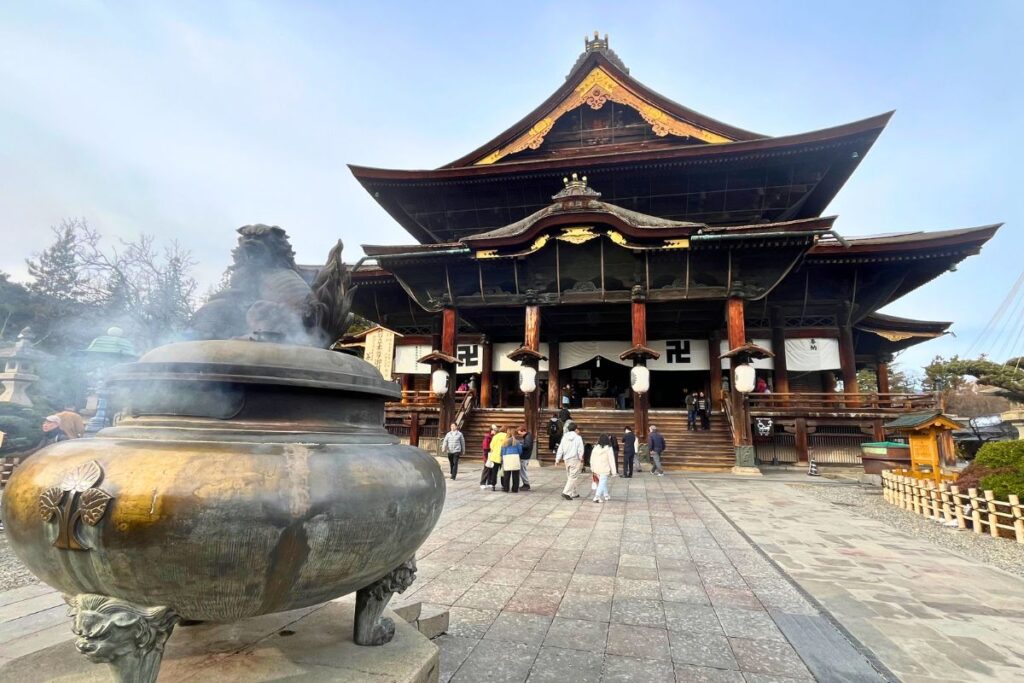
Zenkoji Temple in Nagano City.
Planning to explore beyond the Jigokudani Monkey Park? If so, consider visiting some of these other popular attractions in Nagano!
- Zenkoji Temple: Set within the city center, Zenkoji is a Buddhist temple that dates back to the 7th century. It is said to house Japan’s first-ever Buddha statue.
- Zenkōji Nakamise Street: Stretching down from Zenkoji Temple, Nakamise is a quaint shopping street home to a variety of local stores, restaurants, and cafes. It also happens to feature a number of traditional, historic buildings.
- Togakushi Shrine: Nestled in the mountains of Nagano, Togakushi is a Shinto shrine complex known for its stunning natural beauty. Here, you’ll find five separate shrines connected by a scenic hiking trail.
- Shiga Kogen: Situated within Joshinetsu Kogen National Park, Shiga Kogen is Japan’s largest combined ski area. Consisting of 12 separate ski resorts, the area is a popular spot for skiing, snowboarding, and hiking.
- Yudanaka & Shibu Onsen: Located near the Snow Monkey Park in the town of Yamanouchi, you’ll find two onsen resorts – Yudanaka Onsen and Shibu Onsen. Both of which are known for their cozy vibes and relaxing hot springs.
Where to Stay in Nagano
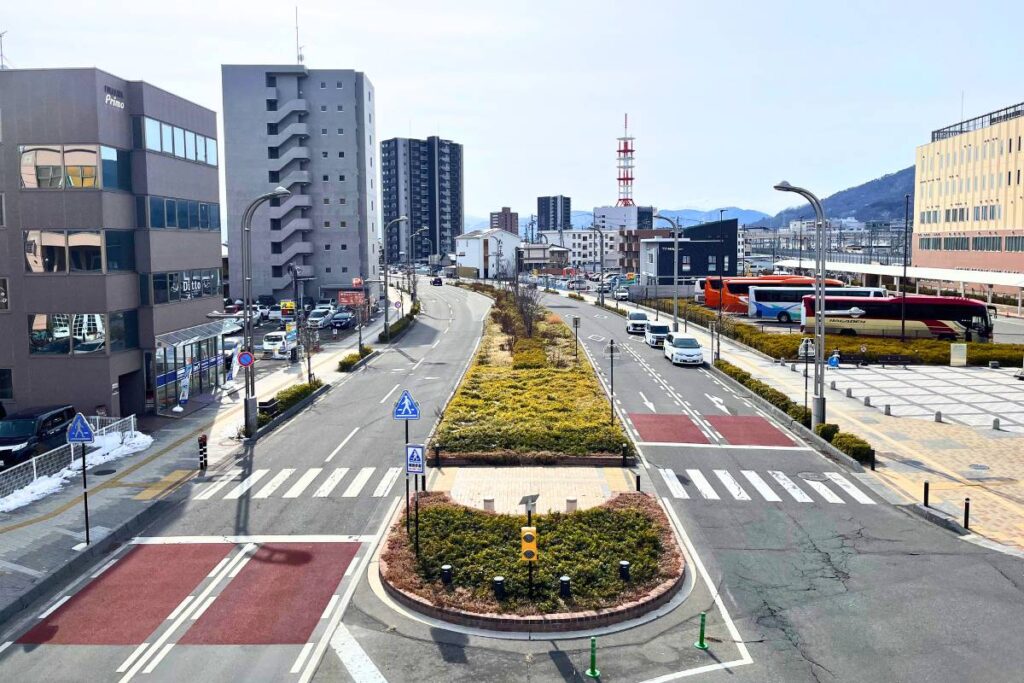
The area around Nagano Station is a great place to stay!
If you have extra time in your itinerary, it may be worth it to spend a night or two in Nagano. The Snow Monkey Park is quite far from Tokyo, so depending on your itinerary it might make sense to stay in the area and explore a bit more. There is, after all, quite a bit to do in the area. For those interested, I’ve included below some of the best places to stay in Nagano.
- Nagano Station: The area around Nagano Station is the best place to stay if you’re short on time. It provides easy access not just to public transportation, but also to a number of the city’s hotels, restaurants, and cafes.
- Yamanouchi: For those who’d prefer to stay closer to the Snow Monkey Park, there’s the town of Yamanouchi. As shared above, this is where you’ll find Nagano’s incredible onsen resorts including Yudanaka Onsen and Shibu Onsen.
- Shiga Kogen: If you’re interested in hitting the slopes, consider staying near Shiga Kogen. There are approximately 100 different hotels scattered around the area, so you’ll have plenty of options to choose from.
Frequently Asked Questions About Visiting the Jigokundani Snow Monkey Park
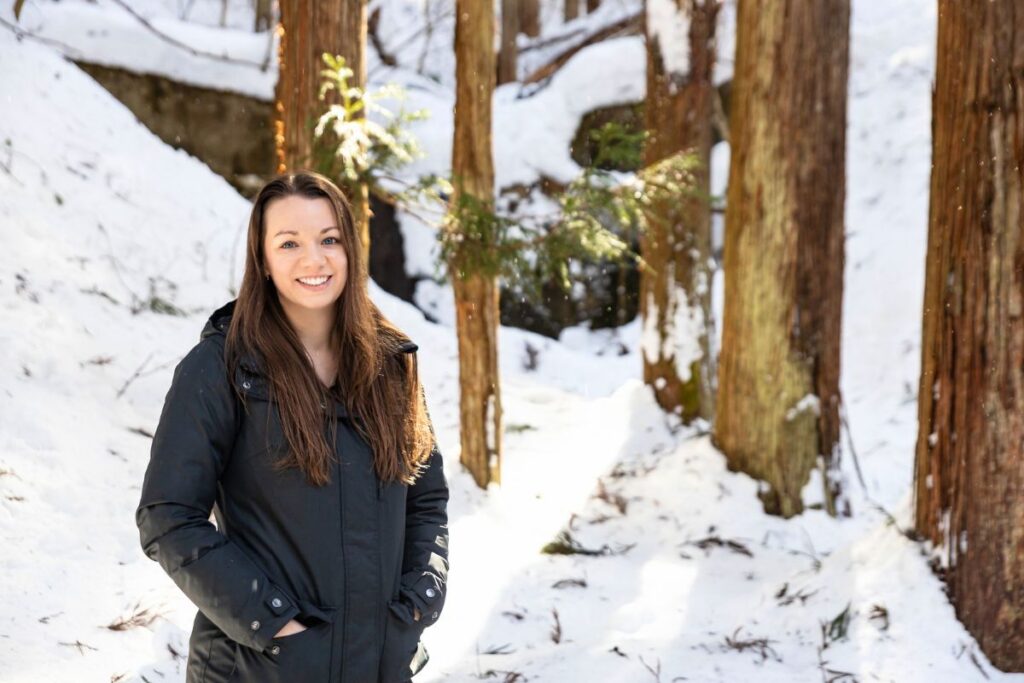
Here are my thoughts on some commonly asked questions about visiting the Japanese snow monkeys.
Is It Worth Visiting the Snow Monkeys in Japan?
Yes, I would say it’s definitely worth visiting the snow monkeys – at least once! They’re so cute! And watching them soak in the onsens is such a unique experience. Besides, it offers the opportunity to see a different side of Japan – one that many people don’t get to experience.
How Far Is Jigokudani Monkey Park from Tokyo?
The Jigokundani Monkey Park is located about 260 kilometers west of Tokyo. It takes about 3.5 to 4 hours to drive there from central Tokyo, depending on traffic. Or, 2.5 to 3 hours by bullet train and public bus.
Can You Do a Day Trip from Tokyo to See the Snow Monkeys?
Yes, it’s completely possible to do a day trip to the Snow Monkey Park from Tokyo! In fact, that’s what I did – and I have to say, I thoroughly enjoyed myself! My two words of advice are: leave early and plan for a long day. The Snow Monkey Park is a long trek from Tokyo, so the earlier you leave the better. It’ll give you more time to see the monkeys and you may even be able to beat the crowds!
Do You Need to Buy Snow Monkey Park Tickets in Advance?
There’s no need to buy your tickets for the Snow Monkey Park in advance. In fact, you can’t purchase them in advance even if you wanted to – that is unless you plan to buy the 2-day Snow Monkey Pass. That said, tickets can be obtained at the park’s ticketing office upon arrival.
How Long Do You Need at Snow Monkey Park?
I would say most people probably spend about 2.5-3 hours at the Snow Monkey Park. This includes the hike in and the hike back out. However, it’s definitely possible to spend more time or even less time. It really just depends on your level of interest – and how many photos you want to take.
Final Thoughts: Visiting Japan’s Snow Monkey Park from Tokyo
So there you have it – my complete guide to the Snow Monkey Park and how to get there from Tokyo! Hopefully, this guide is helpful in planning your own trip to the snowy forests of Nagano.
No matter how you get there, you’re sure to have an incredible time! After all, the snow monkeys are incredibly cute – and quite photogenic! 😀
Planning to visit Jigokudani Monkey Park from Tokyo? What are you most looking forward to? Let me know in the comments below!
Like this post about Japan’s Snow Monkey Park? Pin it now for later!
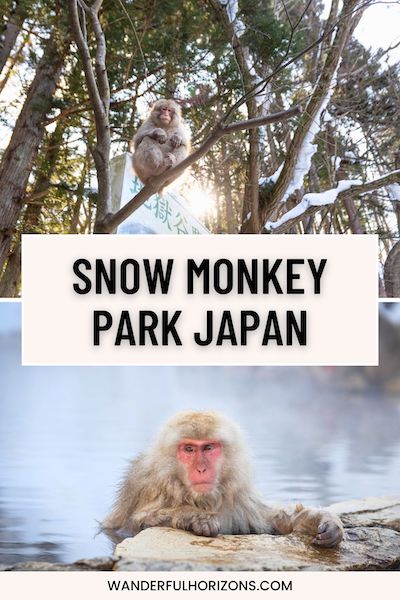
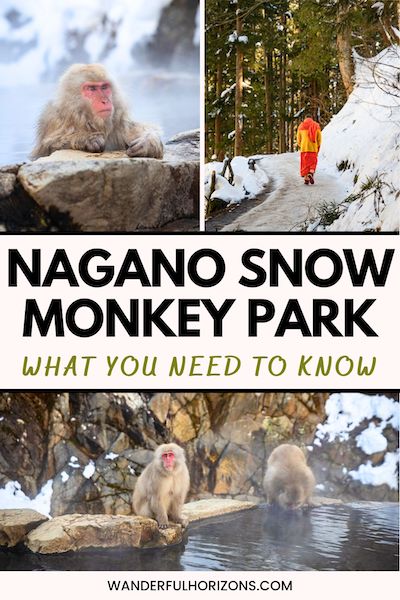
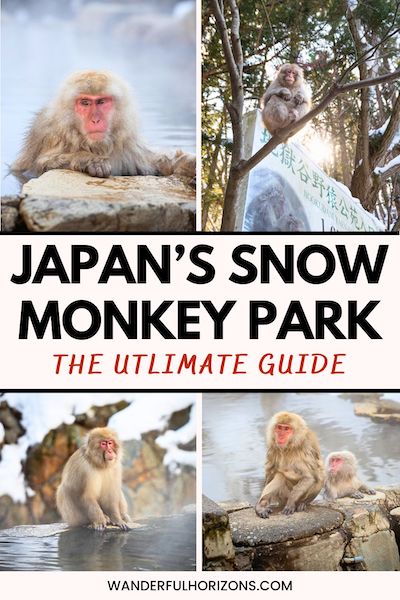

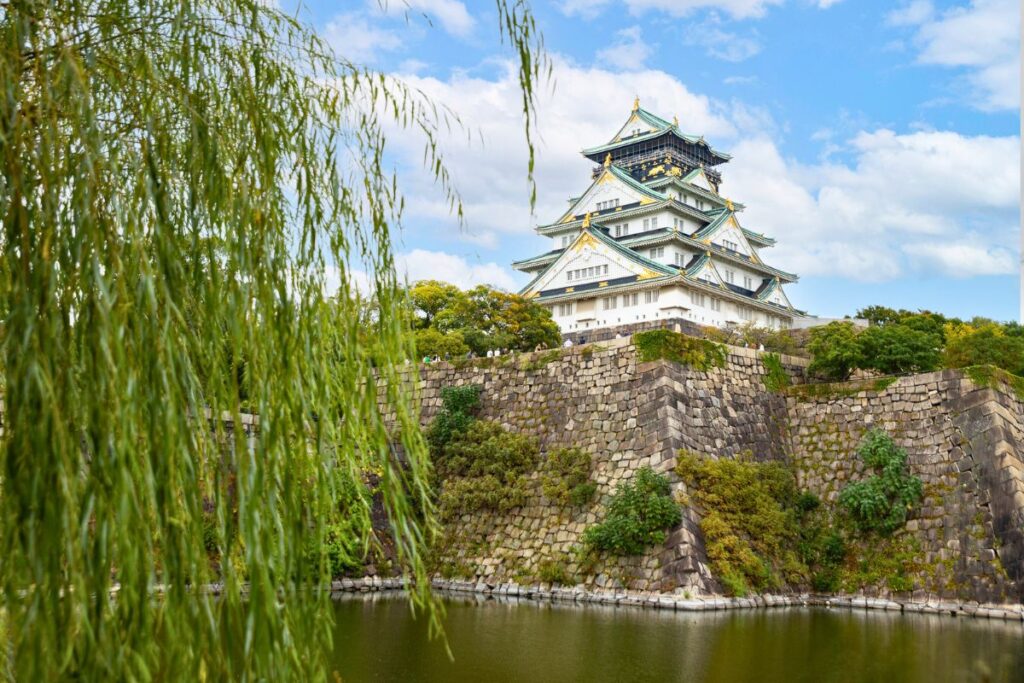
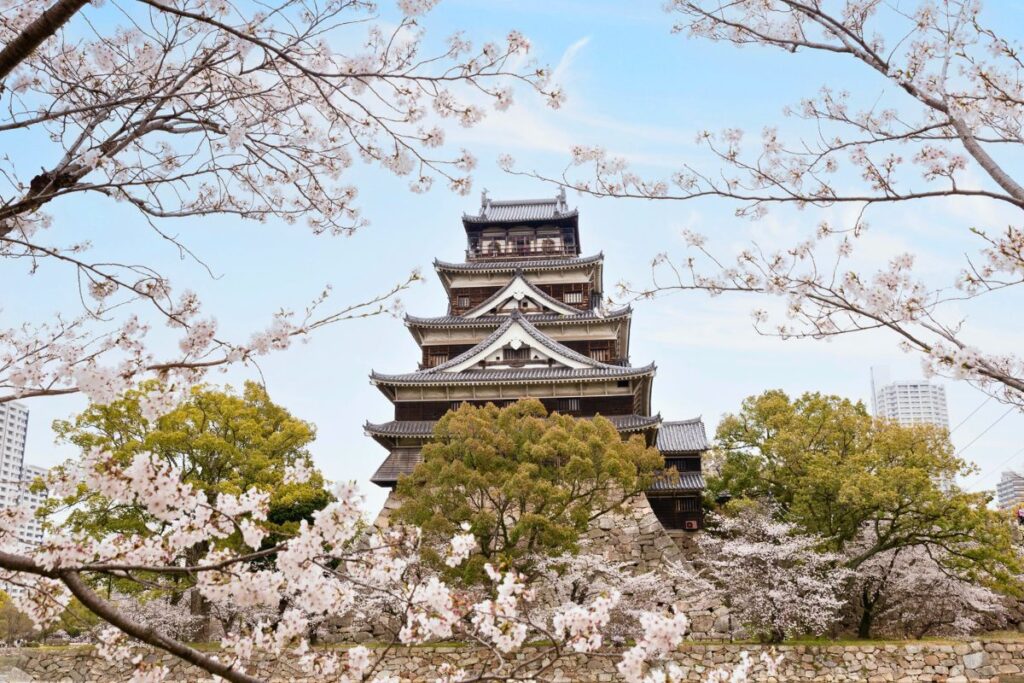
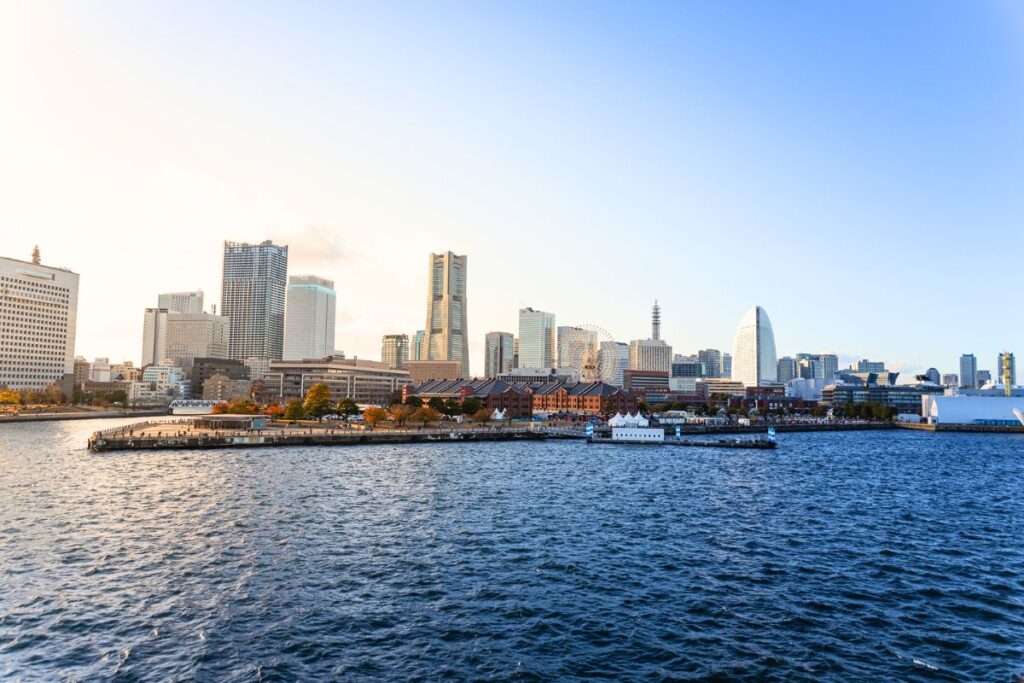
This place just made it onto my bucket list; can’t wait to visit it someday! Thanks for this valuable information, will save it 🙂
You’re most welcome! I’m sure you’ll enjoy your visit – the monkeys are soooo cute!!